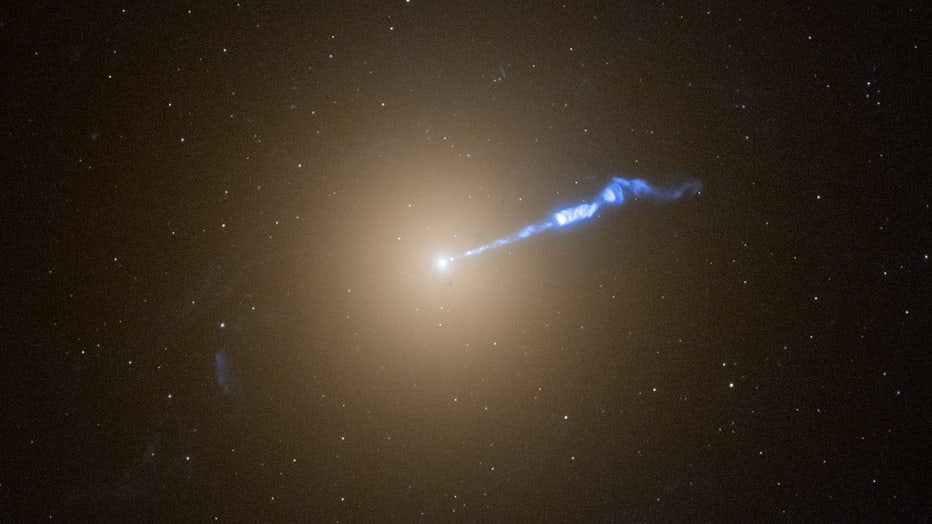NASA: Black hole’s Death Star-like beam appears to make stars explode
This is an artist's concept looking down into the core of the giant elliptical galaxy M87. (NASA, ESA, Joseph Olmsted (STScI))
Astronomer’s at NASA discovered a supermassive black hole that has a Death Star-like jet shooting out at the core of a huge galaxy and it appears that stars along the beam’s trajectory are exploding.
"We don't know what's going on, but it's just a very exciting finding," said Alec Lessing of Stanford University, lead author of the paper published in The Astrophysical Journal. "This means there's something missing from our understanding of how black hole jets interact with their surroundings."
Stars are exploding but not destroyed
The stars that are exploding along the trajectory of the giant blowtorch-like beam are called novae.
The Hubble found that twice as many novae near the beam of plasma are exploding twice as much as compared to anywhere else in the galaxy during the surveyed time period.
These stars typically erupt in a double-star system where an aging star begins to spill hydrogen into a burned out white dwarf star companion, NASA explained.
When the dwarf star has its fill of hydrogen, it explodes like a giant nuclear bomb. But the dwarf is not destroyed in this process, it simply starts this cycle over again.
While it has been theorized that the heat from the jet is leading to the novae explosions, researchers said it is not nearly hot enough in the observed locations to have this type of impact on the stars.
Researchers are still trying to figure out what’s going on.
"There's something that the jet is doing to the star systems that wander into the surrounding neighborhood. Maybe the jet somehow snowplows hydrogen fuel onto the white dwarfs, causing them to erupt more frequently," said Lessing. "But it's not clear that it's a physical pushing. It could be the effect of the pressure of the light emanating from the jet. When you deliver hydrogen faster, you get eruptions faster. Something might be doubling the mass transfer rate onto the white dwarfs near the jet."
What is the jet of light?

A Hubble Space Telescope image of the giant galaxy M87 shows a 3,000-light-year-long jet of plasma blasting from the galaxy's 6.5-billion-solar-mass central black hole. (NASA, ESA, STScI, Alec Lessing (Stanford University), Mike Shara (AMNH))
The jet is being shot out by a 6.5 billion-solar-mass central black hole which is engorged with infalling matter, NASA said.
The black hole is launching a 3,000-light-year-long jet of plasma that is blazing through space nearly at the speed of light.
Anything that is caught directly, or near, the jet "would be sizzled."
The Source
Information for this article was gathered from NASA. This story was reported from Los Angeles.

